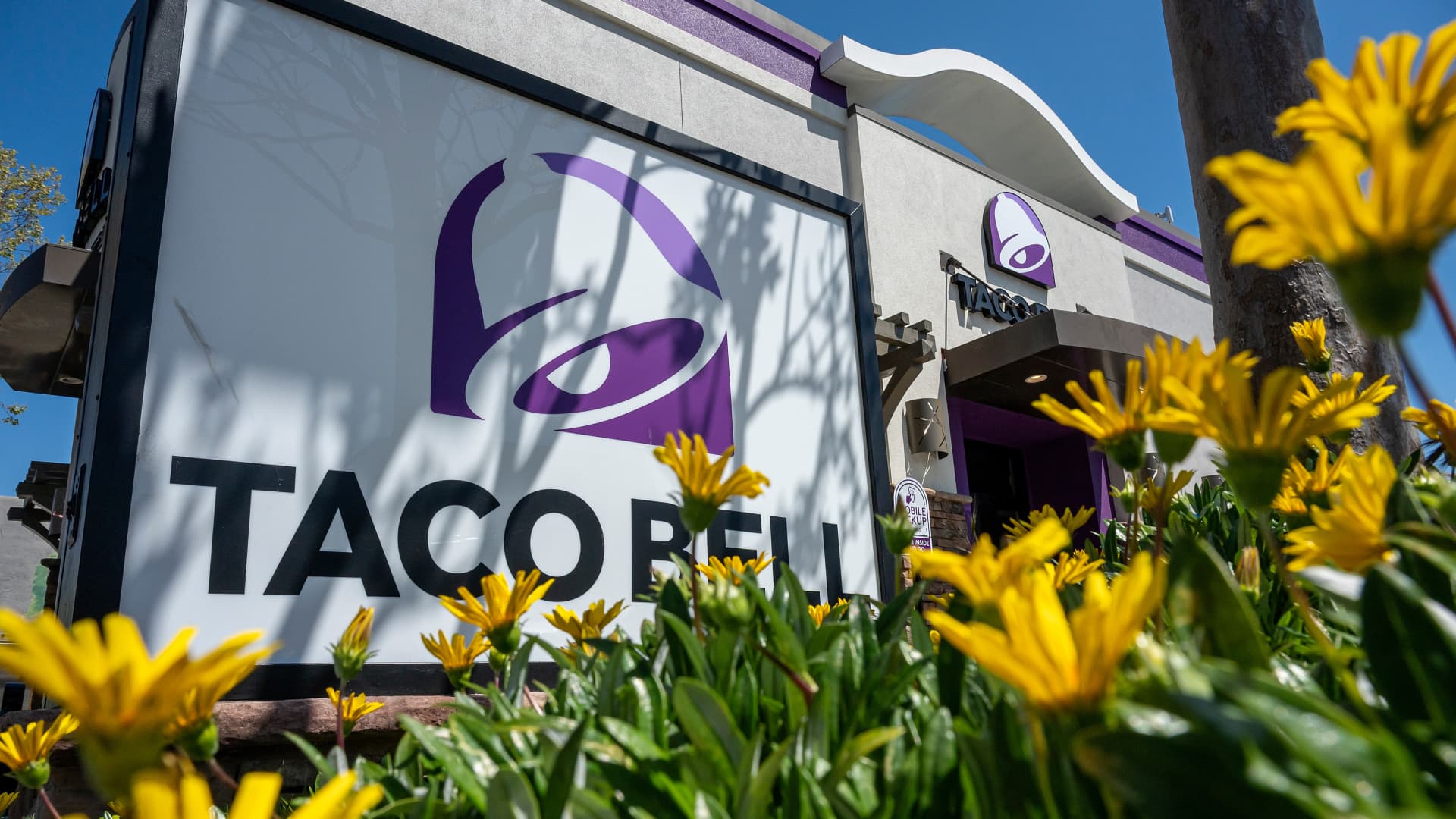A Taco Bell restaurant in El Cerrito, California, US, on Tuesday, April 29, 2025.
David Paul Morris | Bloomberg | Getty Images
With more consumer companies preparing to report third-quarter earnings this week, Wall Street will be watching for signs of a bifurcated or “K-shaped” economy as consumers diverge in their spending behaviors.
There have been increasing signals that wealthier Americans are spending more while lower-income Americans are significantly paring back their spending. Lower-income consumers have been hit hardest by rising inflation and escalating prices on essentials, with this month’s Consumer Price Index report indicating a 0.3% increase on the month, putting the annual inflation rate at 3%.
Shortly after the CPI report was released, the Federal Reserve on Wednesday approved its second straight interest rate cut, lowering its benchmark overnight borrowing rate to a range of 3.75% to 4%.
Meanwhile, the country is entering the fifth week of the government shutdown, with many federal workers going without pay.
Still, consumers with the highest purchasing power have benefited from stock market rallies and rising home values. Data from JPMorgan‘s Cost of Living Survey found that higher-income consumers reported stronger economic confidence readings for the next year.
Recent earnings reports from companies touching all corners of the economy have indicated the K-shaped trend is beginning to take hold. This week, companies like Yum Brands, McDonald’s, E.l.f. Beauty, Tapestry and Under Armour are preparing to release quarterly earnings reports and could report similar trends.
Last week, Chipotle reported it’s seeing consumers who make less than $100,000 a year, which represents roughly 40% of the company’s customer base, spending less frequently due to concerns about the economy and inflation. CEO Scott Boatwright said the company is seeing “consistent macroeconomic pressures” with a 0.8% decline in traffic for the quarter.
Coca-Cola said in its third-quarter earnings that pricier products like Topo Chico sparkling water and Fairlife protein shakes are driving its growth. Procter & Gamble reported similar results, saying wealthier customers are buying more from club retailers, which sell bigger pack sizes, while lower-income shoppers are significantly pulling back.
And some of the companies reporting this week have already indicated they may be seeing similar behaviors. In early September, McDonald’s CEO Chris Kempczinski told CNBC’s “Squawk Box” that the chain’s expansion of its value menu was due to a “two-tier economy.”

“Traffic for lower-income consumers is down double digits, and it’s because people are either choosing to skip a meal … or they’re choosing to just eat at home,” he said.
The trend isn’t limited to just food and beverage, either. In the autos world, consumers who can afford to buy new vehicles are on a spree, while those who are more price constrained are sitting out. Defaults and repossessions are on the rise while the average price for a new vehicle is setting records.
And in the service industry, Hilton earlier this month reported that it saw a drop in revenue for its affordable brands while its luxury offerings performed exceedingly well. Still, CEO Christopher Nassetta told CNBC last month that he doesn’t expect bifurcation to last much longer.
“My own belief is that as we look into the fourth quarter and particularly into next year, we’re going to see a very big shift in those dynamics, meaning, I don’t think you’re going to continue to have this bifurcation,” Nassetta said. “That’s not to say I think the high end is going to get worse or bad. I just think the middle and the low end [are] going to move up.”





